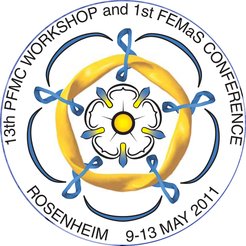New Materials for Fusion Research
IPP organizing international conference in Rosenheim / 280 attending from all over the world

The objective of fusion research is to develop a power plant operating on the same principle as the sun: by deriving energy from fusion of atomic nuclei. This is to be achieved by confining an electrically charged low-density hydrogen gas, a plasma, in a magnetic field cage and heating it to ignition temperatures of over 100 million degrees. Although the hot plasma ring levitates almost free of contact with the walls of the plasma vessel, particles and heat are still able to escape from the plasma and adversely affect certain areas of the walls. The attractive properties expected from a fusion power plant therefore call for new heavy-duty materials that are not readily activated and are heat-resistant, thermally conductive, and immune to physical and chemical erosion.
In order to develop such materials one must investigate possible interactions between the plasma and vessel walls, starting with the processes on the atomic level in the material and proceeding to the behaviour of complete components. One needs, for example, to predict what plasma particles will impinge on the walls and what changes they will thereby induce. Or else it is a matter of stabilizing a plasma-compatible, but brittle wall material such as tungsten by sophisticated fibre reinforcement.
The “International Conference on Fusion Energy Materials Science” being held in conjunction with the PFMC Workshop is presenting the results of the European FEMaS (Fusion Energy Materials Science) project, to be terminated this autumn. This coordination venture of the European Union under the aegis of Max Planck Institute for Plasma Physics has established a powerful network in the past three years. Throughout Europe it has put fusion research in touch with scientists at universities and with large-scale devices such as synchrotron and neutron sources. This has helped, for example, to clarify without impairment the structure of and damage to materials and make them plastically visible. It is thus possible to basically understand the adverse effects of the plasma and design optimized fusion materials that can withstand damage.
